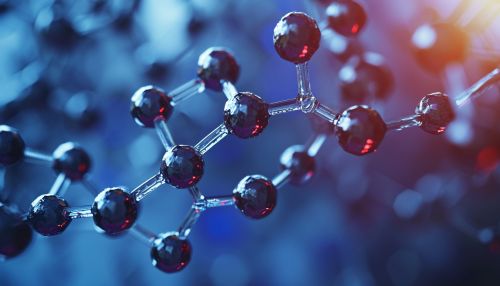Triterpene
Overview
Triterpenes are a class of chemical compounds composed of three terpene units with the molecular formula C30H48; they may also be thought of as consisting of six isoprene units. Triterpenes are one of the largest classes of plant metabolites and are known to perform a wide variety of biological functions. They are found in a wide variety of plants including Ginkgo biloba, Ginseng, and Centella asiatica.


Structure and Classification
Triterpenes are derived from the acetyl CoA pathway and are made up of thirty carbon atoms. They are classified based on their chemical structure into four main groups: tetracyclic triterpenoids, pentacyclic triterpenoids, saponins, and sterols.
Tetracyclic Triterpenoids
Tetracyclic triterpenoids are composed of four rings and include compounds such as lanosterols and cycloartenols. These compounds are precursors to sterols and steroids in plants and animals.
Pentacyclic Triterpenoids
Pentacyclic triterpenoids are composed of five rings and include compounds such as betulinic acid, ursolic acid, and oleanolic acid. These compounds are known for their wide range of biological activities including anti-inflammatory, anti-cancer, and anti-viral effects.
Saponins
Saponins are triterpenes that are glycosylated, meaning they have one or more sugar molecules attached. They are known for their ability to form foams in aqueous solutions and have been used in traditional medicine for their expectorant and anti-parasitic properties.
Sterols
Sterols are triterpenes that have undergone modification to form a four-ring structure with a hydroxyl group at the third carbon atom. They are crucial components of cell membranes and precursors to steroid hormones.
Biosynthesis
The biosynthesis of triterpenes begins with the formation of mevalonic acid from acetyl CoA. This is followed by the formation of isopentenyl pyrophosphate (IPP) and its isomer dimethylallyl pyrophosphate (DMAPP). Six molecules of IPP are then condensed with one molecule of DMAPP to form the 30-carbon compound squalene, the precursor to all triterpenes.
Biological Functions
Triterpenes play a wide range of roles in plants and animals. They are involved in the formation of cell membranes, serve as precursors to hormones and vitamins, and have a variety of medicinal properties. Some triterpenes have been found to have anti-inflammatory, anti-cancer, and anti-viral effects. They also have potential applications in the treatment of cardiovascular diseases.
Applications
Due to their wide range of biological activities, triterpenes have potential applications in medicine, agriculture, and industry. In medicine, they are being studied for their potential use in the treatment of cancer, inflammation, and viral infections. In agriculture, they are used as natural pesticides and growth promoters. In industry, they are used in the production of cosmetics, food additives, and detergents.
